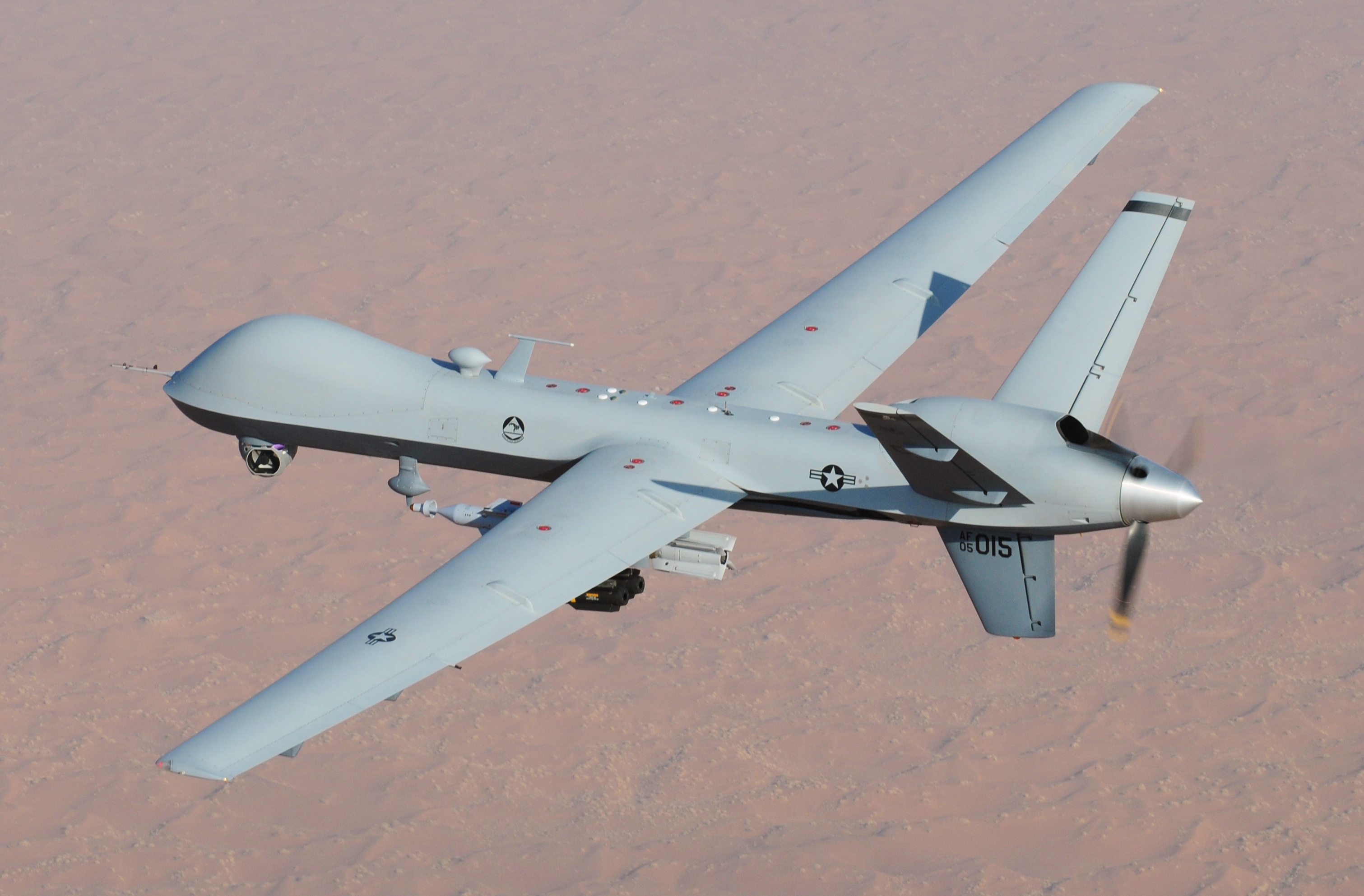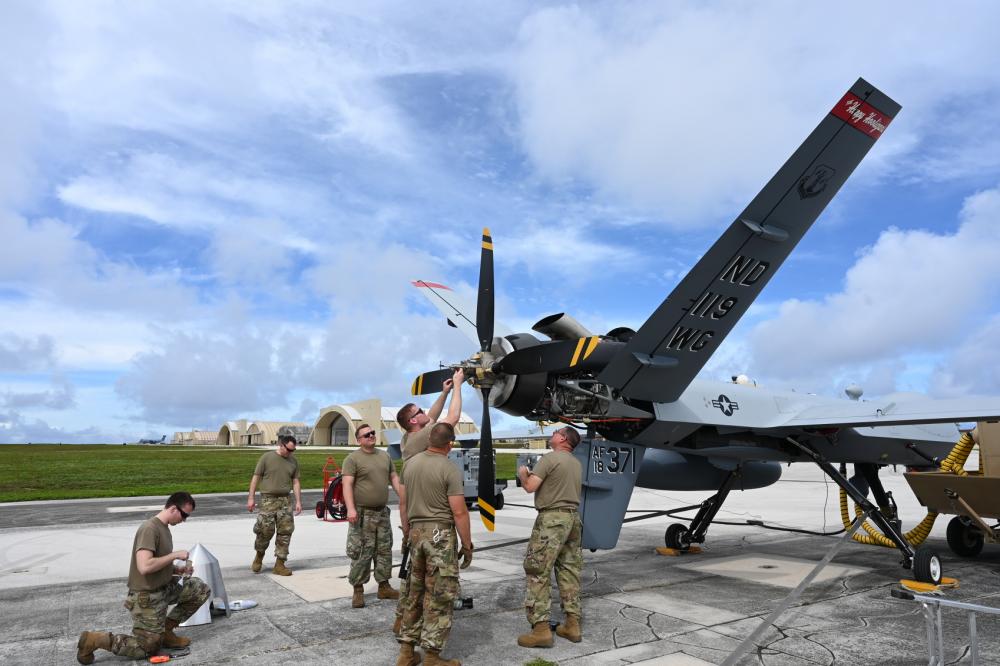The MQ-9 Reapers participated for the first time in the annual Valiant Shield Exercise this year, proving its agility and mission relevance to the US Indo-Pacific Command’s Joint Force by demonstrating various capabilities for the Reaper agile combat employment (RACE) concept.
The RACE concept was one of the primary objectives of MQ-9’s participation in this year’s Valiant Shield exercise, a series of large multi-domain wargames involving the US army, navy, marines, and airforce.
Agile Combat Employment (ACE) focuses on the ability to move aircraft rapidly to a network of smaller airfields in the Western Pacific to avoid being targeted by Chinese missiles in the event of war.
During the test, the 556th Test and Evaluation Squadron (TES) of the US Air Force (USAF) conducted 24/7 operations for 19 days straight over an area spanning 14,484 kilometers from Creech Air Force Base (AFB) in Nevada to three separate operating locations in the Pacific.
#ICYMI – @TeamEglin proved the MQ-9 Reaper’s agility & relevance to the @INDOPACOM's Joint Force through their participation in the Valiant Shield exercise.https://t.co/CKx3izUvck@HQ_AFMC | @aircombatcmd | @PACAF
— U.S. Air Force (@usairforce) August 10, 2022
The remarkable feature of these operations was that the 556th Test and Evaluation Squadron (TES) used satellite communications for all taxi and airborne procedures during the sorties, which enabled the MQ-9 to perform automatic landings without ground control for the first time in a crucial Pacific exercise.
The most notable sorties were the ones in which the MQ-9 RACE team set up operations in Palau with just a pallet and half of the equipment and ten personnel consisting of two operators and eight maintainers.
The team utilized a US Marine Corps (USMC) Forward Area Refuelling Point to generate three sorties over 28 hours, with the average time on the ground of just over an hour.

The demonstration means that the MQ-9 can now be flown using satellites over the horizon for thousands of kilometers across the Pacific. Only ten personnel would suffice to safely refuel and relaunch the Reaper because of its new automatic landing and take-off capability (ALTC).
Whereas earlier, moving Reapers to the Pacific theatre required three to four days of preparation to dismantle the airplane and ship the parts on C-17s, following which the plane had to be reassembled again.
This process required 55 maintainers and four “cockpits,” or antenna control towers, to be set up and tested around the landing strip to ensure an unhindered signal to the drone for a pilot on the ground to land it.
“It’s fundamentally shaking up how we present our force because I don’t need everybody downrange anymore,” Lt. Col. Michael Chmielewski, commander of the 556th Test and Evaluation Squadron at Creech, told Air Force Magazine while noting that only 10 Airmen made the trip, instead of 55.
“What we started doing was just full control over satellites,” Chmielewski explained. “It turns out you can do everything on the ground except start the aircraft.”
Following the Reaper’s final take-off from Palau, the personnel and equipment were loaded on a C-17, from where they flew to the Anderson AFB in Guam and were used to land the same MQ-9 they had initially launched from Palau.

Due to the ALTC, all that is needed for maintenance and refueling of the Reaper can now fit in a six-foot-square box, reported Air Force Magazine, noting that the package can now be flown using a CV-22 Osprey or C-130 Hercules instead of a C-17.
However, according to Chmielewski, there is a caveat that the risk increases because of less maintenance and repair capability and equipment. Nevertheless, the exercise showcased the ability of Reaper to be deployed and relocated anywhere across the Pacific.
Agile Combat Employment
The USAF has been mainly focused on the Agile Combat Employment (ACE) concept in recent years to meet the increasing challenge from anti-access/area denial (A2/AD) capabilities fielded by near-peer adversaries like China and Russia.
Overseas US bases are vulnerable to the threat of thousands of ballistic and cruise missiles from China and Russia. For instance, China can strike the US military facilities located in the western Pacific’s first and second island chains.
Therefore, it is essential that in a potential future conflict with China, the US can leverage its networks of well-established and austere air bases, to rapidly deploy, disperse and maneuver combat capability throughout a conflict zone.
There can be no better example of this than the ongoing Russia-Ukraine war, where Ukraine’s Air Force has been able to keep the Ukrainian airspace contested, despite being outnumbered by the Russian Air Force.

Russia also boasts massive ballistic and cruise missiles that can strike anywhere. Recognizing this threat, the Ukrainian fighter pilots adopted flexible tactics like keeping the aircraft on the move from one airfield to another and flying difficult flight paths to reduce the chance of the enemy catching them on the ground.
Enhanced Battlefield Awareness
In addition to ACE, the Valiant Shield exercise also, for the first time, involved the Reaper’s Electronic Support Measures pod to be connected with the Command and Control (C2) Common Operating Picture integration lab of the Pacific Theater.
The data collected by the pod was shared with everyone on the network across the theatre, including the MQ-9 ops cell and aircrew, enhancing target area awareness.
This provided the combat jets involved in the exercise with long-range find fixed track (FTT) data. Furthermore, Reaper also switched its radar to maritime mode to scan for enemy ships and relay the data to the carrier strike group (CSG).
In addition, Reaper demonstrated its ability to safeguard manned aerial platforms and study patterns of live changes to alert commanders of potential preparation for an attack.
“The ESM pod and integration with a C2 Common Operating Picture are emerging capabilities assessed for MQ-9 utility in Valiant Shield,” said Chmielewski.
“The ESM pod proved its ability to give the MQ-9 an all-weather, long-range sensor capable of finding, fixing, and tracking targets of interest to enhance situational awareness and provide actionable targeting solutions as part of the Joint kill-chain.”
- Contact the author at tanmaykadam700@gmail.com
- Follow EurAsian Times on Google News




